Science is built on a foundation of careful observation, and recording one’s observations in great detail are important for later expansion: looking things up, continuing to expand on ideas and make linkages.
With limited memory storage and recall capacity, though, we need a little help to bring back the details from sojourns in thick forests or the bottom layers of long-forgotten cities. In addition to helping you build on what you initially capture with the five senses, you need to have good reference material when you’re ready to write up your processes and results. The clearer and more detailed the descriptions, the easier your peers can evaluate the work, possibly even replicate your findings in an attempt to confirm your conclusions. So, the level of detail is key to maintaining the level of scrutiny required of a strong scientific discipline.
An essential tool for this work, then, is the field notebook.
If you’re a reader of
, you’re perhaps already familiar with rich examples of field notes. An entire newsletter devoted to rich notebook scholarship, Jillian shares a diverse set of examples of field note diaries, such as Darwin’s copious observations in his explorations of the natural world.How one goes about creating field notes is largely personal, although conservation biologist Eleanor Sterling at the American Museum of Natural History shares great tips for those just beginning field journals. I’ve also just learned about Field Notes on Science and Nature, an edited volume of beautiful field notes and artwork, and now I need it yesterday. It shares the important role physical field notes, and the act of note-making, has in the life of a scientist, and ultimately makes the case for going analog.
Of course, I’m not in the field. Anything I observe - my data - is what other people think, as evidenced by the words they use and the behaviours they display and self-report. This is more aligned with how ideas are observed and documented in this week’s post in
(an especially enjoyable read).When I was in graduate school, I used the blue hardcover chemistry lab books to record observations from research (my own and those studies reported on in journals and at conferences). I decided to revisit this technique again, devoting a lovely gifted journal I received a few weeks ago.
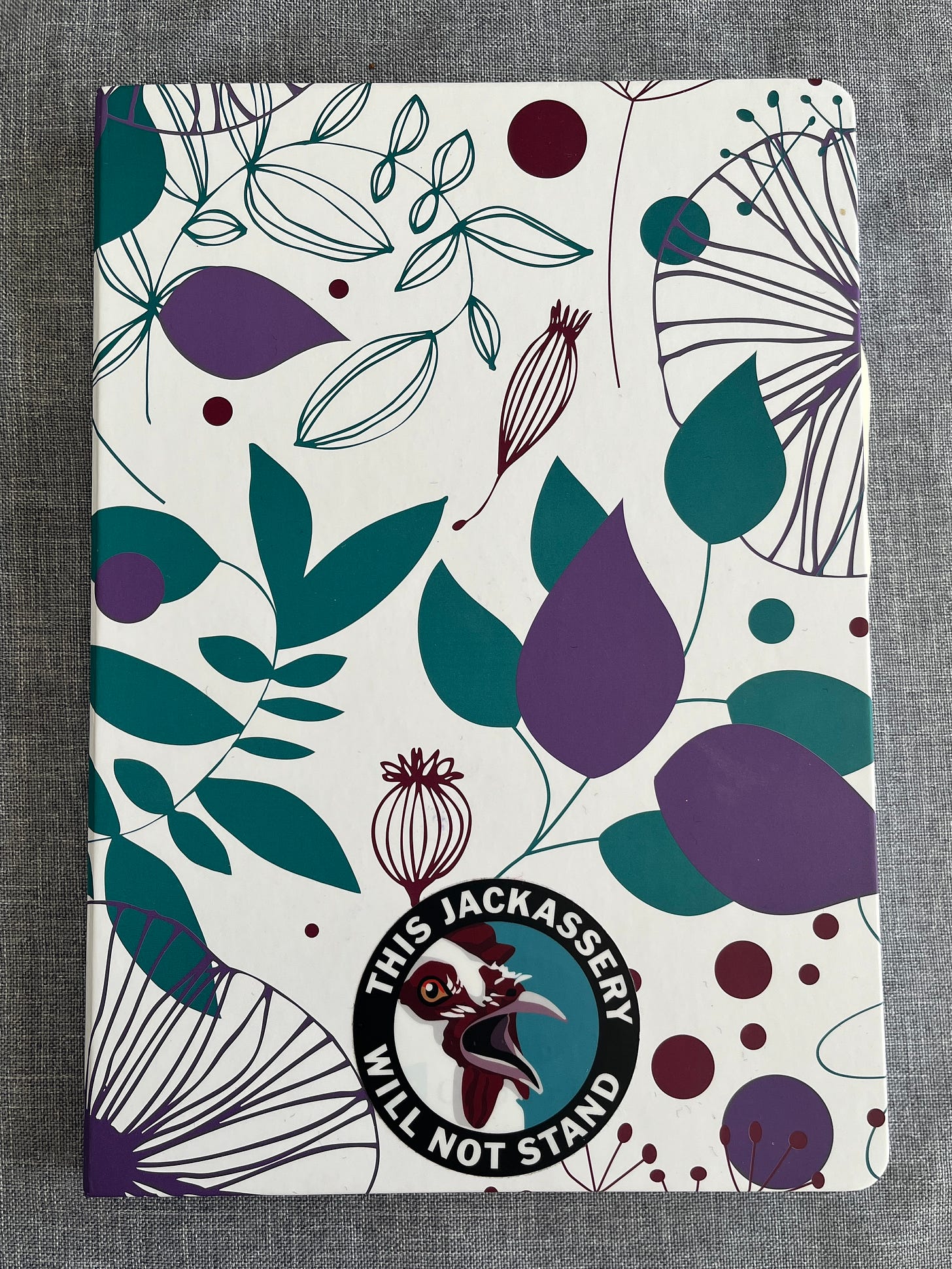
As I read literature on implementation science, evaluation, and engagement, I make notes about what stood out to me, what didn’t make sense, and what I need to follow up on. Sometimes, I’ll scrapbook when I don’t want to copy tables, but will then add my own thoughts and questions around them. As to ink, I like ballpoint pens like these from Papermate for their good flow, and they don’t bleed through the lighter stock of office supplies.
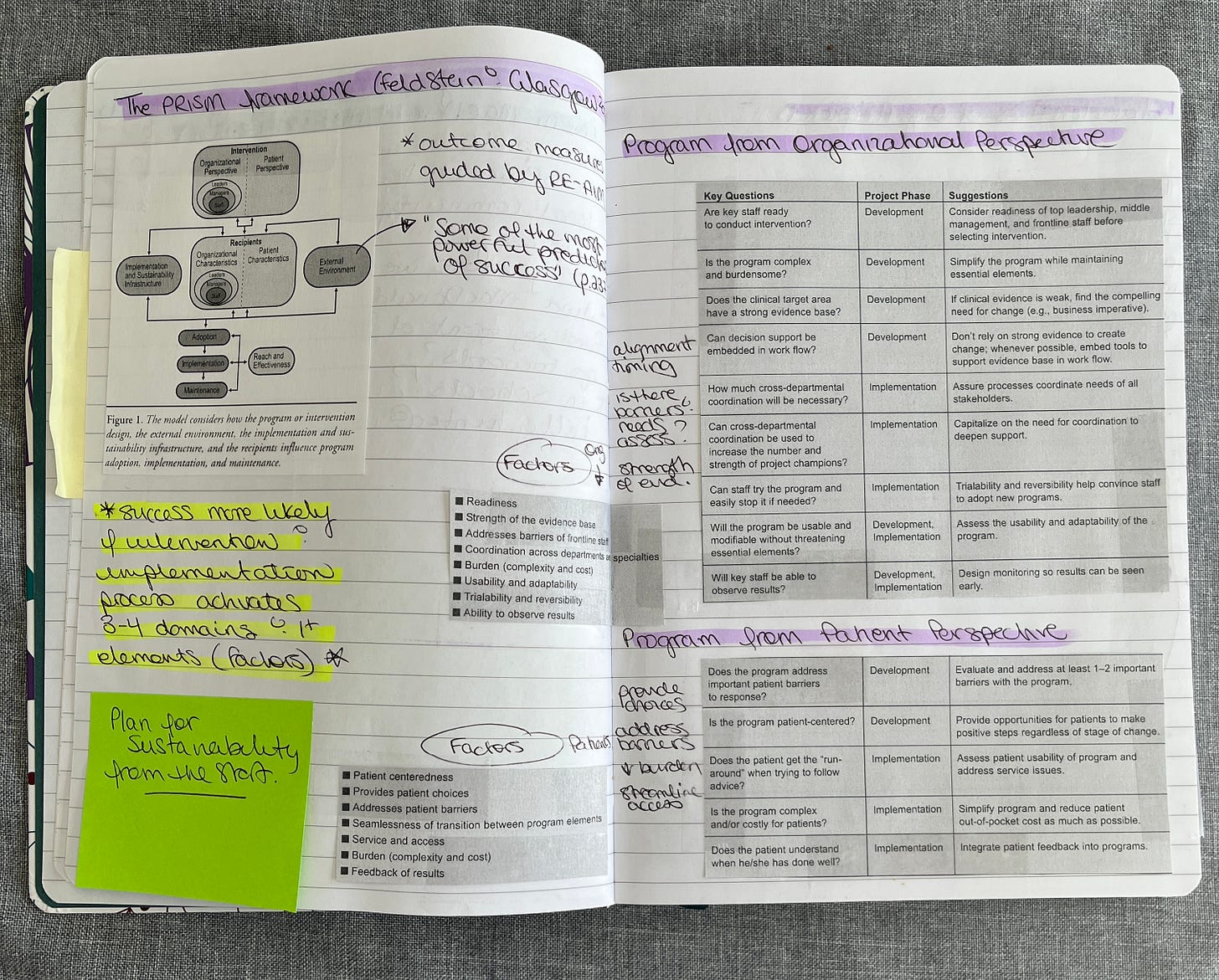
Also, I bought myself a smaller book to keep as a reference “bible” for particularly salient ideas and quotes. Over time, I can see myself transferring select material from the journal above to this one.
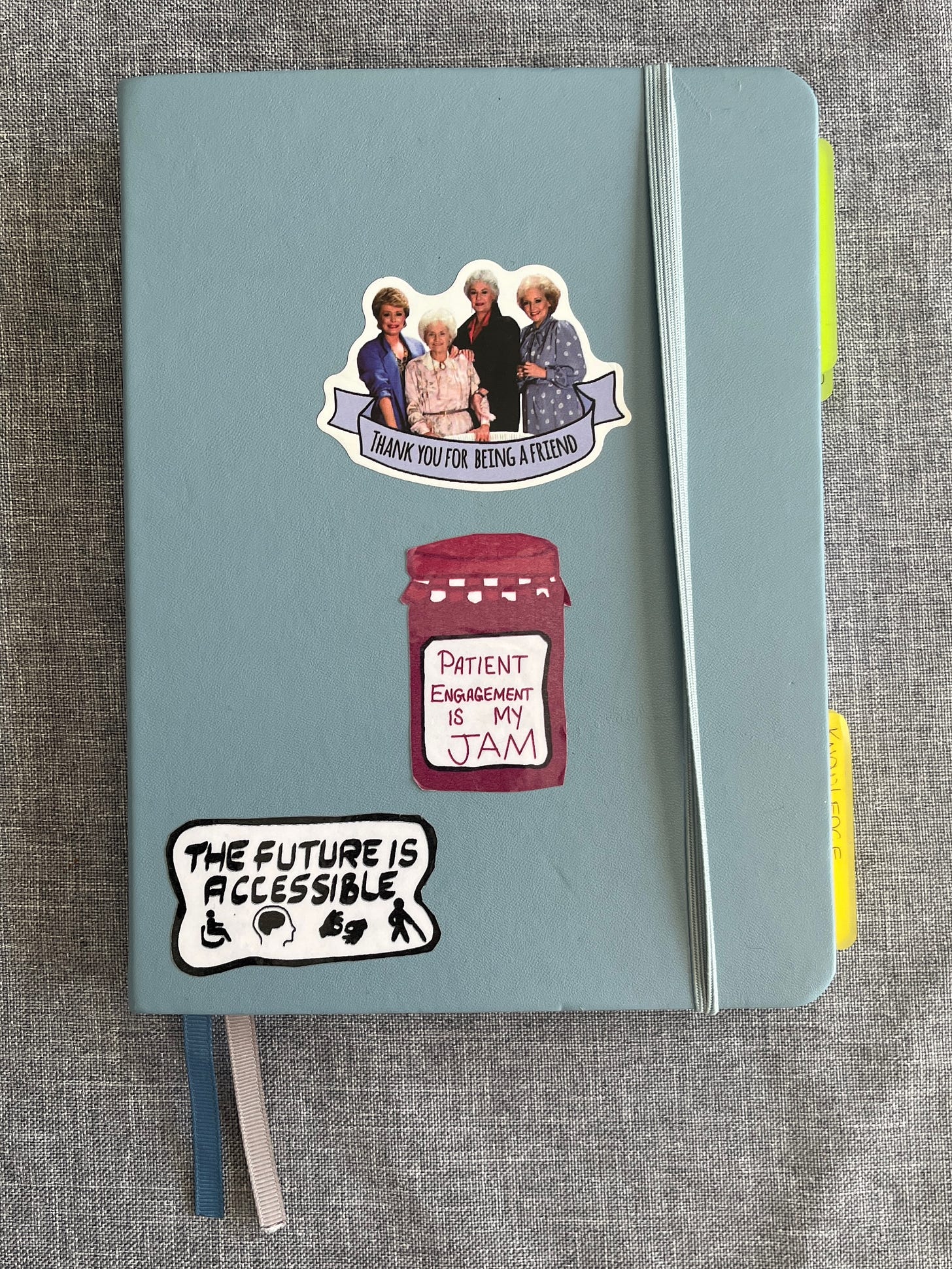
It’s an Artist Loft journal from a craft store, hardcover with 68lb stock. In order to prevent bleeding, I still have to have to use my ballpoint pen and have a light hand with any highlighting. It contains notes from talks I’ve been to and covers patient engagement; knowledge translation; principles of graphic and video design; equity, diversity and inclusion; and, hashtags and social media. For example, below is a page distilling key strategies from a larger table that Powell et al., 2015 share that may be helpful in implementing healthcare change from research.
I suppose one could classify it as a commonplace book: a quick reference tool that also helps me commit knowledge to memory by writing it down. Mark has a whole series about The Knowledge That Won't Fit Inside Your Head in
, ending with a notebook expo in which he shares the variety of notebooks he uses. Mark of recently shared a similar volume kept in his Garage Mahal, where he has deconstructions of car parts and poetry.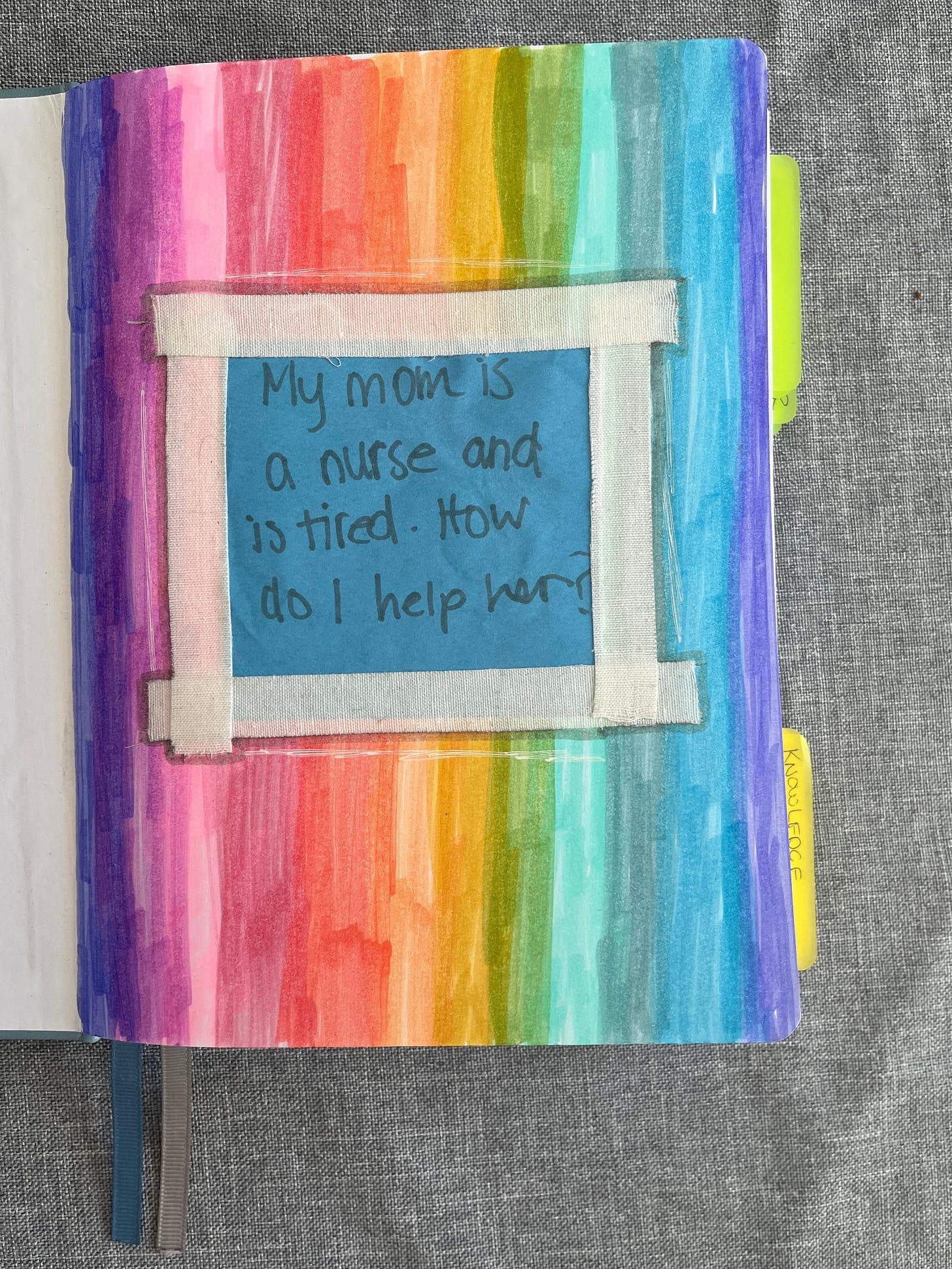
Drawing makes you look more carefully at your subject. As an observational tool, drawing requires that you pay attention to every detail -- even the seemingly unimportant ones…" - Jenny Keller, cited in WIRED’s Review of Field Notes of Science and Nature (2011)
Then I have more personal notebooks. This red one, adorned with a sticker I like from a local brewery by the artist Quarrelsome Yeti, is more of an art/quotes journal.
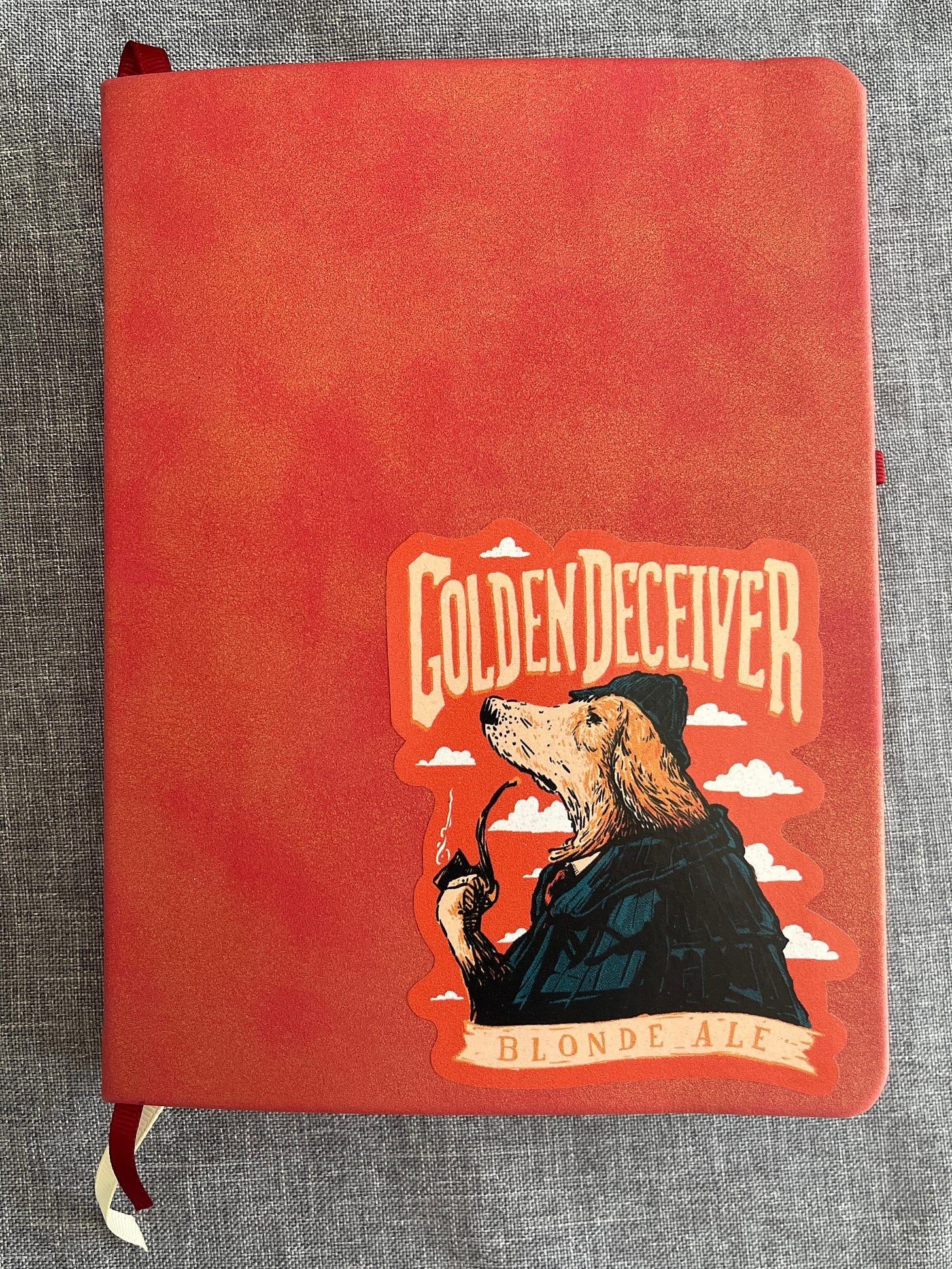
I started these types of journals back in mid-2019 (using the 80lb paper weight from Artist’s Loft), although I’ve had more informal note keeping over the years. In it, I’ve divided it into 12 months, with 80s/90sthemed title pages. There’s no real requirement or structure, other than I fill the pages when inspired to do so. For example, January has my temperature blanket key, my 2023 list of books I’ve read, as well as an illustration of a text chain that made me laugh, and quotes from books that I want to keep.
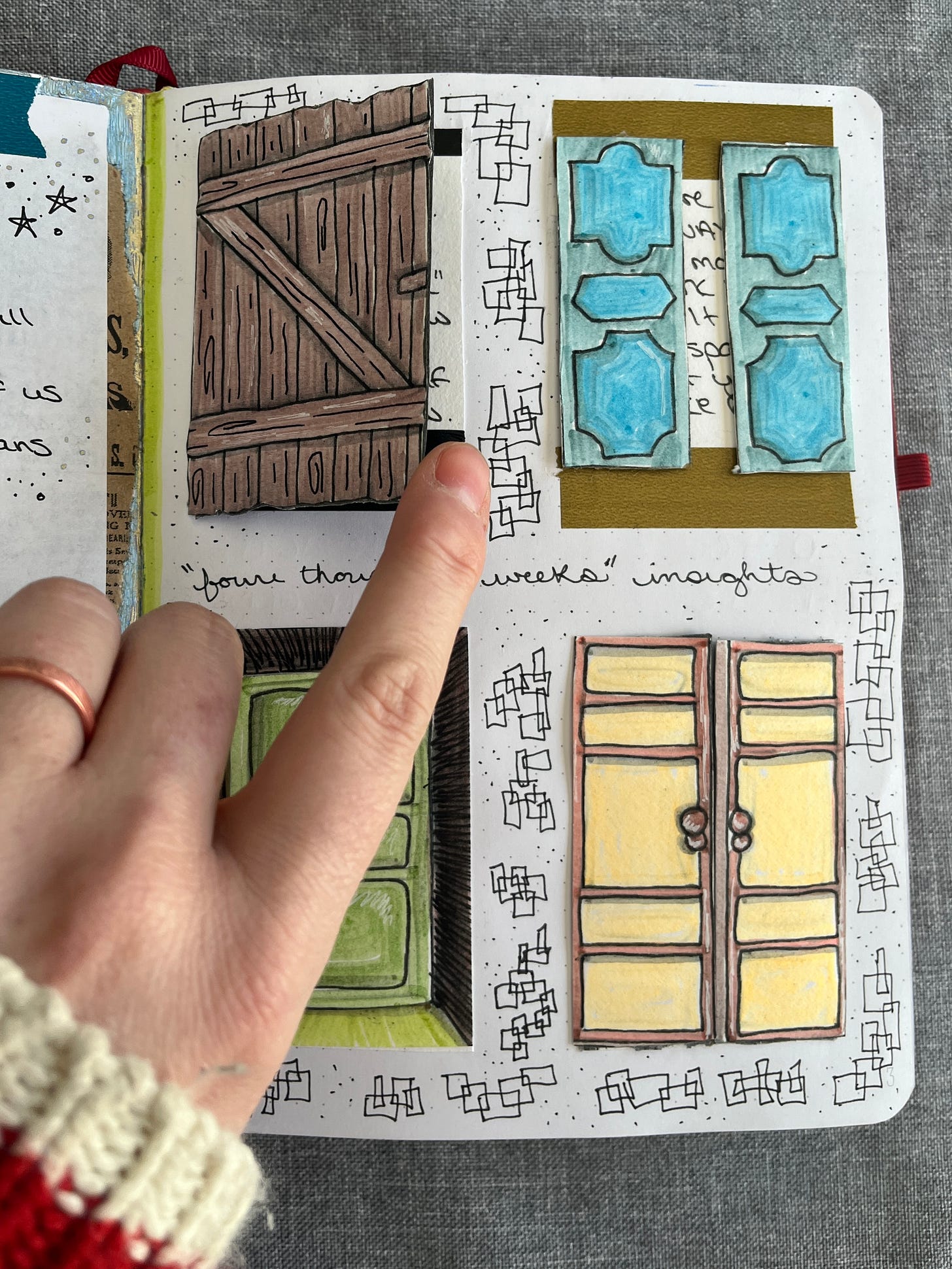
Then, to help come up with ideas for writing posts, I started writing quick snippets in this book. It’s already helping plan out ideas to explore in future posts, and in the spirit of field notes, there’s no editing.
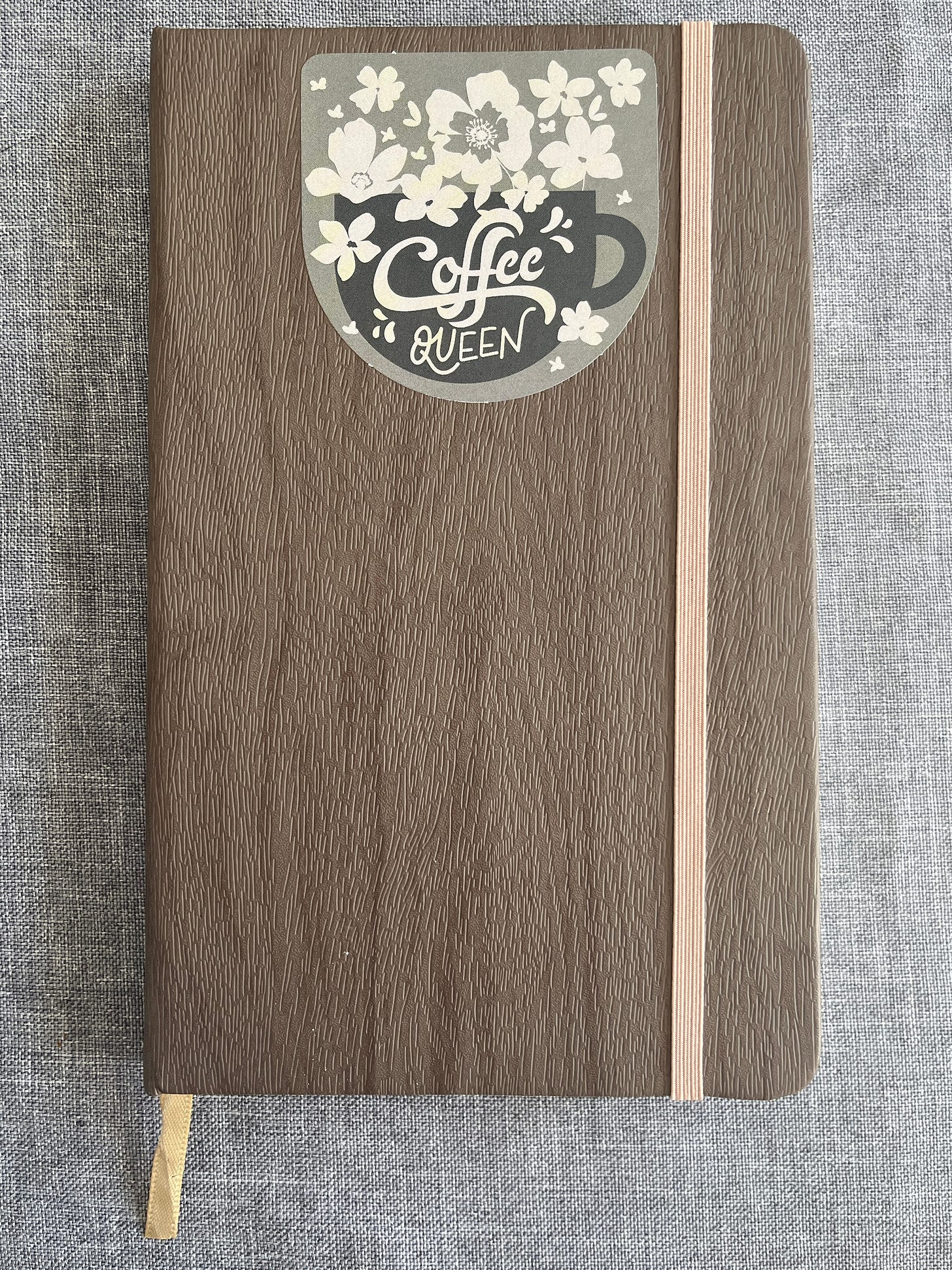
No matter how trivial an observation or piece of information seems, write it down.
- Eleanor Sterling, American Museum of Natural History.
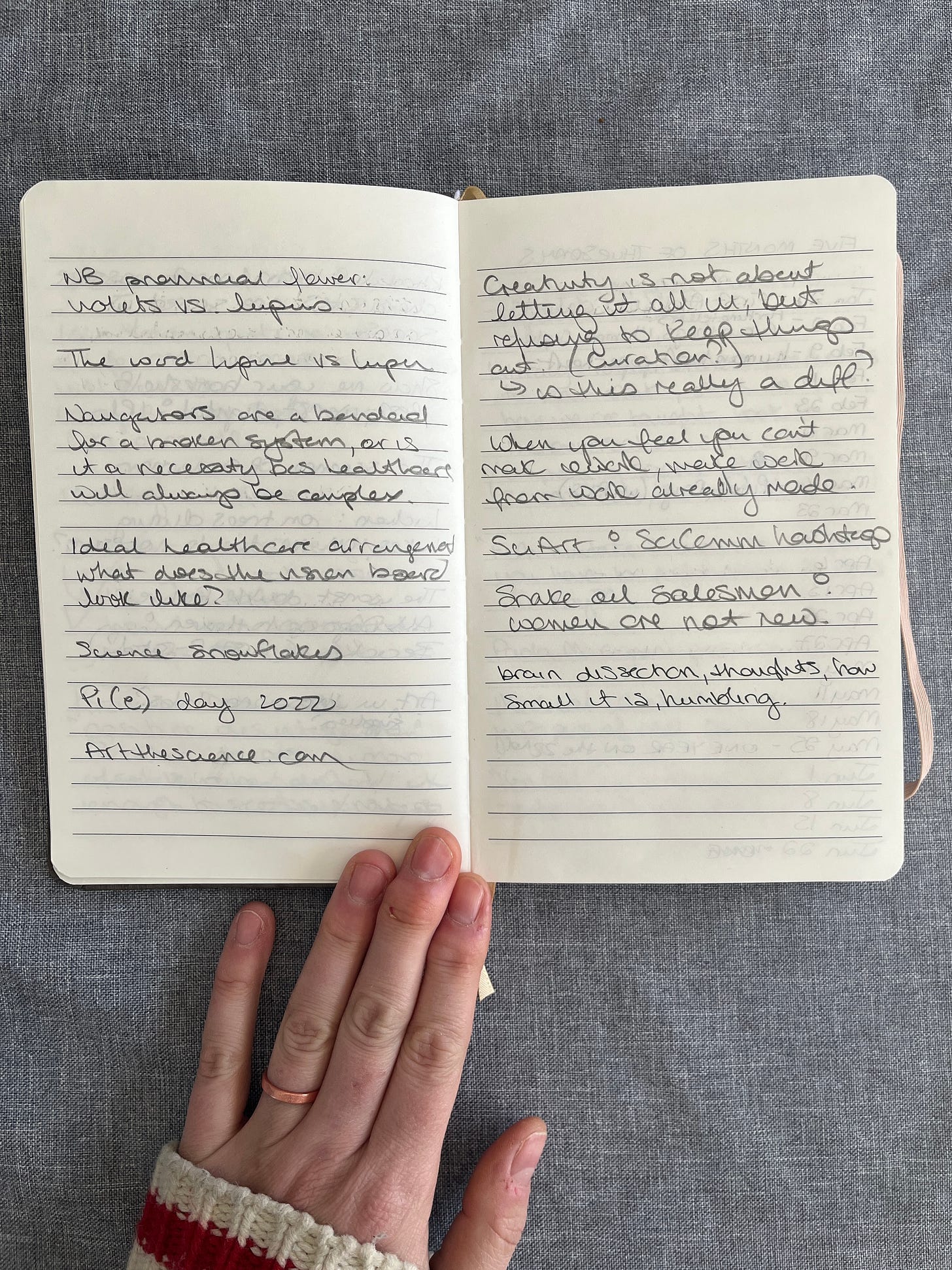
I’d be remiss if I didn’t mention my work diary, which I use in project management meetings to take notes. I’ll go through it when it’s done and move anything of note to my Bible, then store it and start a new one.
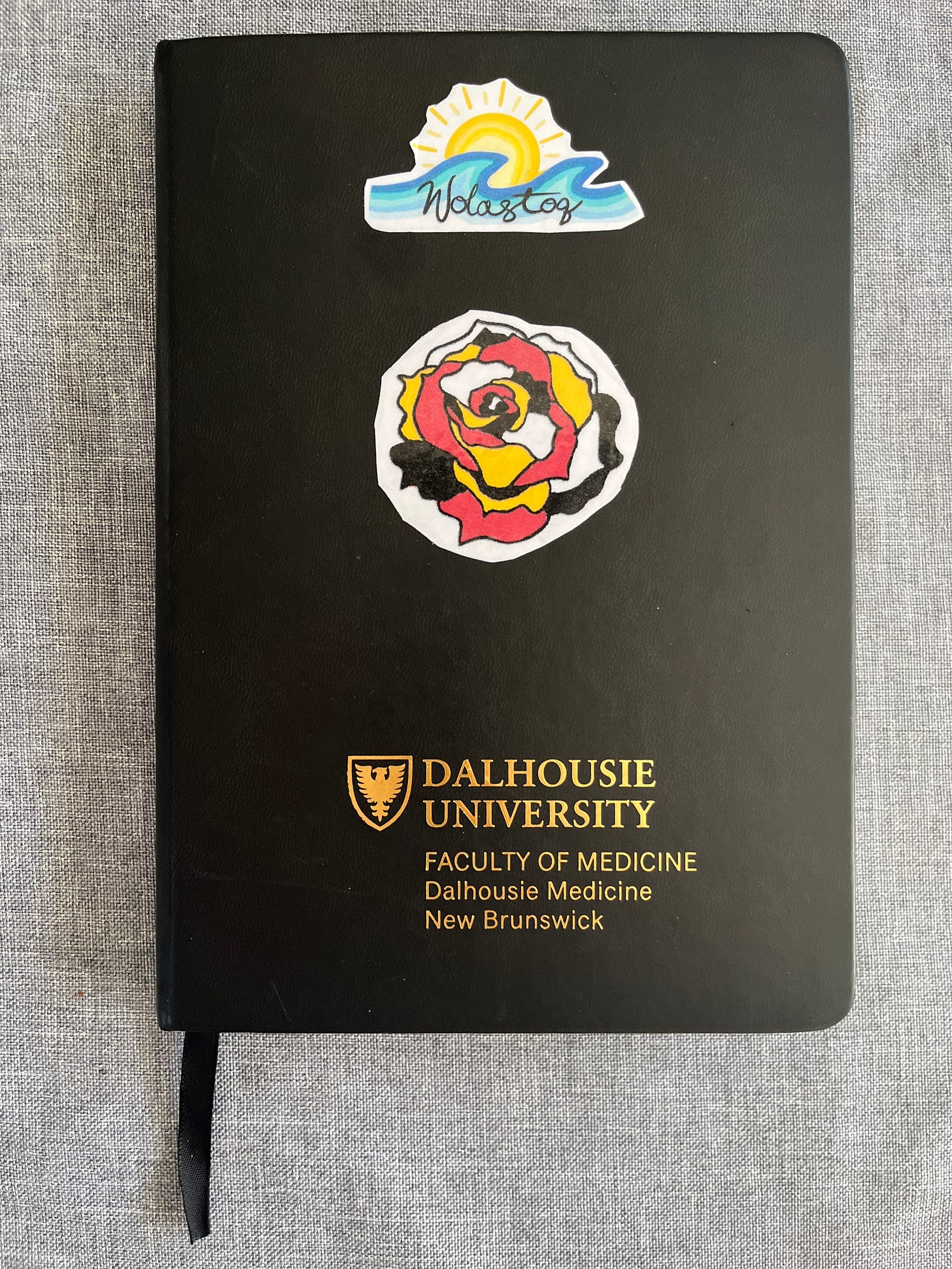
Does this count as a field note?
Finally, while I have other sketchbooks, this is probably my nicest one: a soft brown leather flipbook given to me for my birthday this year, with a pocket in the back for keepsakes in your travels.
Rebecca Holden (
) seems to have a similarly-sized notebook that she brings on her hikes. She also has a lovely system for organizing pantry notes, and is now beginning to incorporate her own sketches into her notes and her newsletter posts.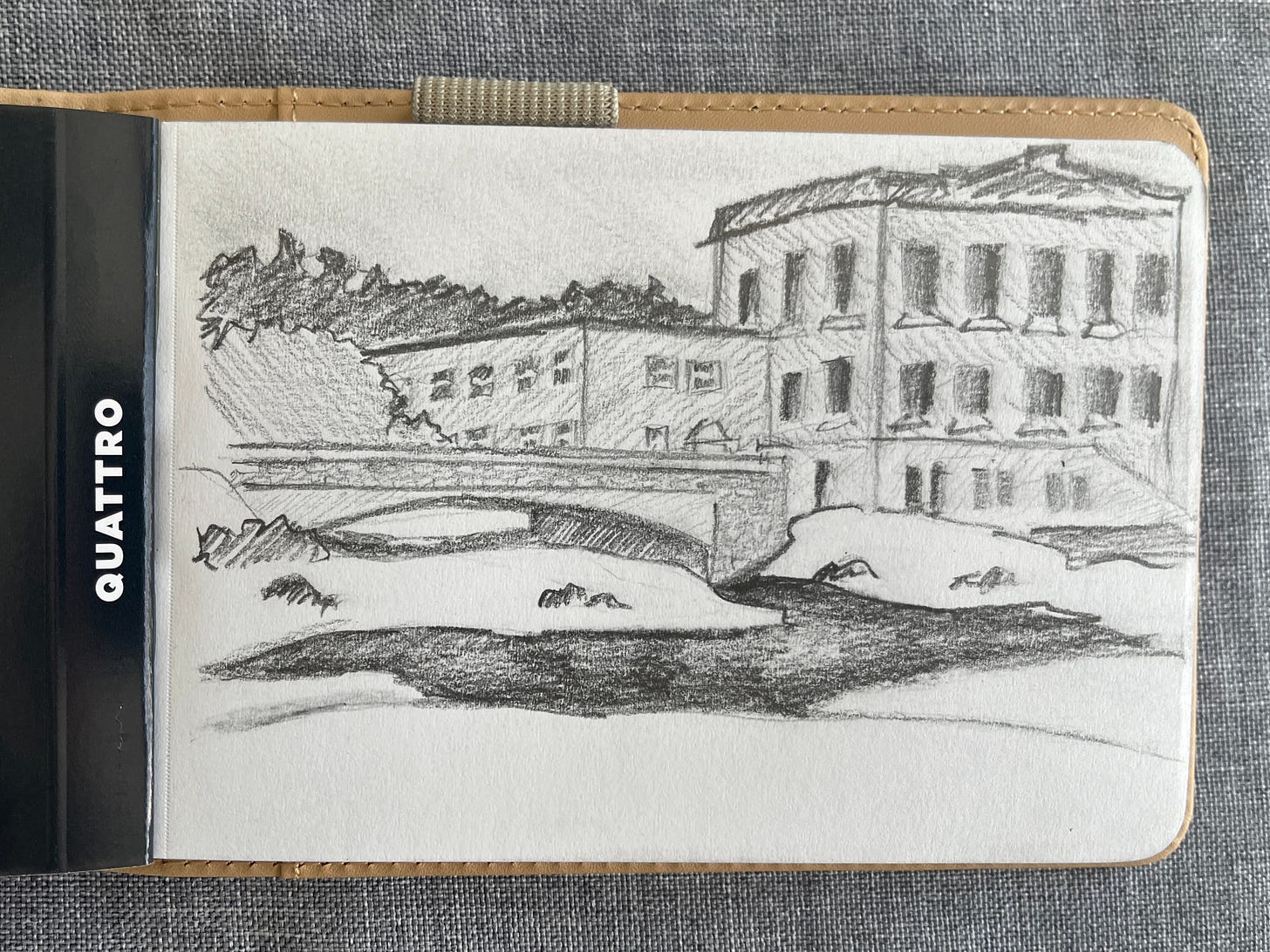
Not sure what, if anything, I’ll do with these sketches. I’ve been toying with a separate newsletter feature/section/tab devoted to my hikes/birding, so perhaps they will feature there.
I’ve enjoyed learning from fellow Substackers about their methods to their own notetaking madness, and would love to hear from more of you. What do you use to keep track of your ideas? Is there an idea you see on the posts I’ve shared that inspires you to crack out a fresh notebook and get documenting?
Let me know in the comments below. And thanks to
, , and for the inspiration!






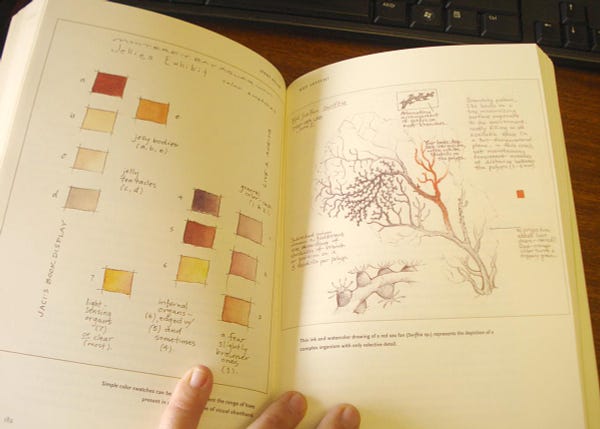
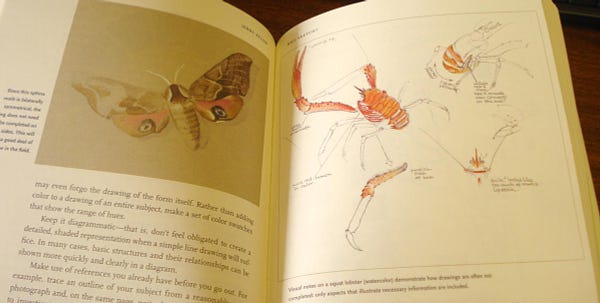
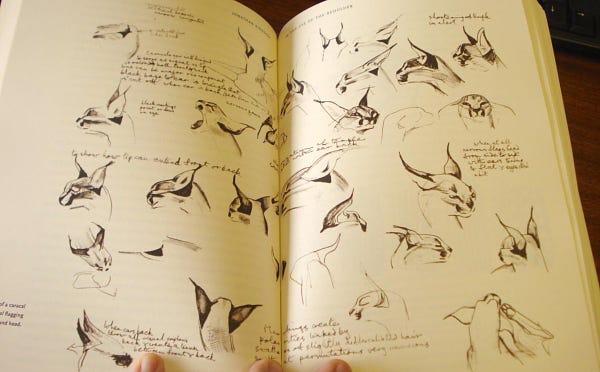



You take such good notes, Bryn! They’re so organized and pretty to look at. I’m not that way at all. My notes are usually scrawled across a page sideways and written in my cramped scrawling handwriting. Which is fine, but I’m in awe of all the beautiful note takers!
And the sketch of your colleague reminds me of a time in high school I turned in math homework and my teacher said it was “fine, but I may not want to doodle the words I hate math across the top of the page- surely there was a better use of my time”
Really fascinating! I think what’s struck me most about hearing all of you (Mark, Jillian, Rebecca anyway) discuss your note taking habits is how utterly different they are from mine. I read all of your stuff and I think, “oh, we must have minds that work the same, we come out with like output,” but then I discover that you have this labyrinthine system of organization behind it. Bryn, I feel like I’ve been given a guided tour into the workings of your mind and that is really cool; thank you.